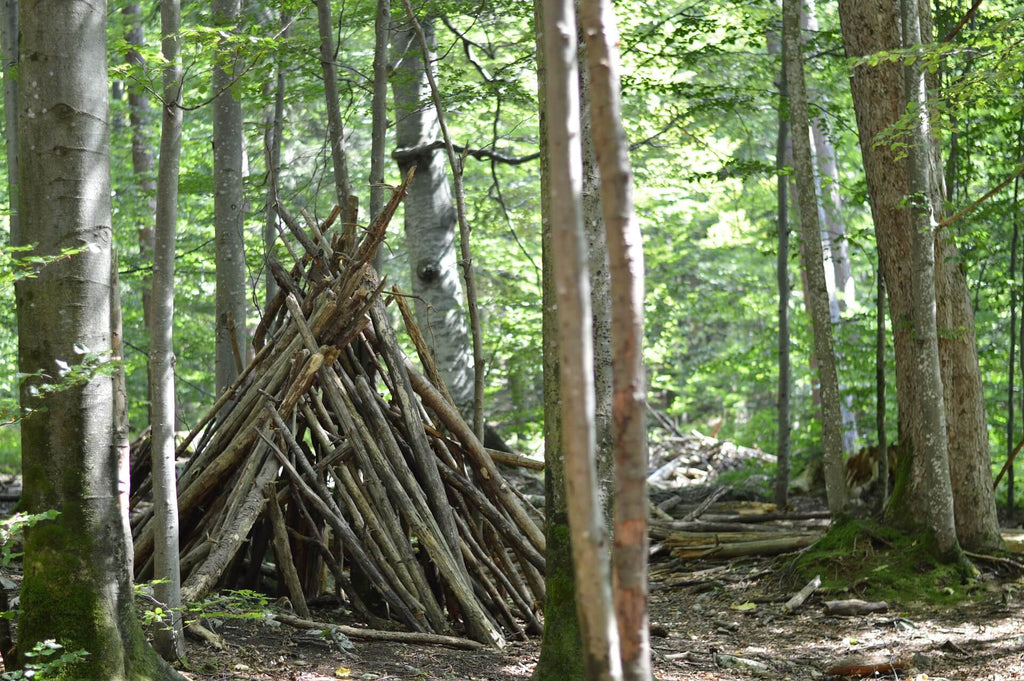Building a shelter – a step-by-step guide

Protecting your own body and therefore your personal health should always be your top priority. In everyday life, you don't usually have to worry about this goal being at risk. However, if you are suddenly confronted with a survival situation, this feeling of security can quickly disappear. To ensure that influences such as rain, wind, sun and cold have no chance of affecting your body in an already demanding and unfamiliar situation, you should quickly build a sturdy and good shelter . This is the only way to ensure that you can think about your next steps in the dry and regain your strength in a reasonably safe environment. WOLFGANGS shows you step-by-step instructions on how to build a simple but effective shelter.
Building a shelter - a step-by-step guide
There are many different types of shelter and depending on the area you are in, there are different approaches to building one. In this article, we would like to show you how to build a simple shelter that can be built without any special tools. Since you don't have the luxury of having the right outdoor knives or tools with you in every survival situation, it is important to know how to get by without such aids.

The location determination
First, start by determining the location, as this is extremely important for future success. Particularly suitable locations are those where you find a resilient and unyielding " wall side ". This could be a rock face or a fallen tree, for example. It is also possible to build your own wall by taking a stable and slightly longer branch and supporting it against a tree trunk. The latter option is clearly the more stressful at first, but it can be implemented in almost any terrain, so that construction can always be guaranteed.
Also make sure that the place is as windless as possible. The constant confrontation with a cold wind will ensure that you get even colder in your shelter. A careful search for a location definitely pays off. You should therefore avoid open areas such as meadows. In such places, a lot of dew forms during the night, which brings additional moisture into the shelter.
The construction
Next, deal with the construction of the roof and make sure that the angle is at least 45 degrees. Water accumulating on the roof would be too risky and could literally cause your action to " fall into the water " later on. The material for building the roof (usually branches and sticks, but more on that later) is placed on the ground with one side and leaned against the wall with the other, so that the angle mentioned is ideally created. Proceed in this way along the entire side of the roof until a tightly woven structure can be seen at the end.
When covering this roof structure, always start at the bottom and slowly work your way up. Try to estimate a thickness of around 7 cm to ensure an insulating effect.
Above all, rely on the following materials to ensure that the roof is of high quality:
- generously sized leaves
- moss
- branches
- grass
Make sure that no sticks or tips of the sticks are sticking out after covering. These would slowly guide the water into the interior, as the drops would slowly run down.
If you have a rescue blanket, foil or something similar with you, or if you happen to find something similar, then incorporate these materials into the roof covering to ensure even greater density and stability. Make a furrow in the ground around the shelter so that when it starts to rain, the water can drain away and your shelter stays dry.
Why wood is perfect for construction
No matter where you are, wood is generally available in abundance, so you should focus on this material accordingly. It can be used and worked on without any tools (bending, bending, breaking, etc.) and offers you good stability.
Make sure that the wood you choose is not rotten and is very durable . Especially with the previously presented variant of building your own wall, the main branch supporting the roof must be flawless and robust enough. The weight of the finished roof should not be underestimated. The main branch must therefore be able to withstand these forces.
There are enough dead wood on the ground so that you don't even have to damage the forest in an emergency. The search is uncomplicated and energy-saving, so you can save your energy for possibly more important tasks during a survival situation.






